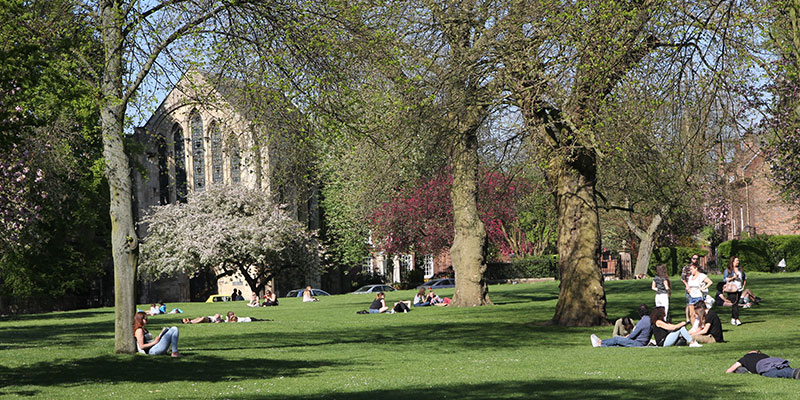This is the biggest Gothic church in all of England and one of the largest in northern Europe, 520 feet long, 250 wide at the transept, with a central tower 200 feet high. Three soaring towers make it easy to find. The Cathedral is located on the north edge of the old town in a beautiful setting.
Built on the site of the first Roman settlement, the church owes its origins to an early Saxon king, Edwin, who married a Christian queen and converted to Christianity in the year 627.
To commemorate his baptism, he built a small wooden church on the site of the Minster. Much later a series of larger stone churches were constructed, one after the other, including a vast Norman church in the Romanesque style, and then finally, the Minster.

Construction on the present building began in about 1230 and was completed by 1472, taking nearly 250 years for construction. Regular maintenance and renovations have continued every year ever since. Today the Minster is an awesome place that requires 1000 people to keep it functioning.
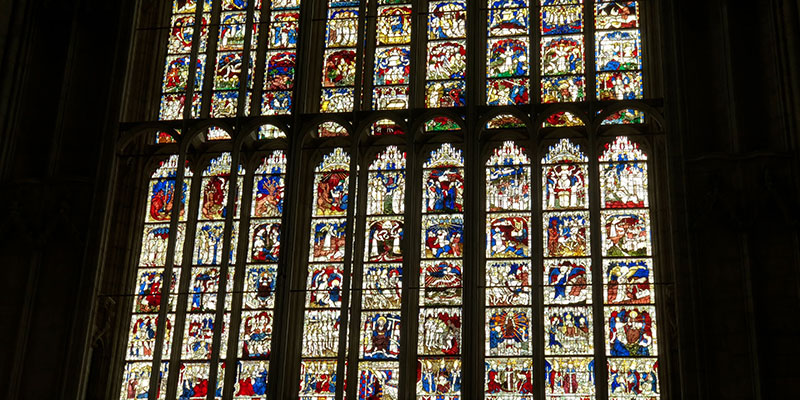
The window with five long sections of glass was built in 1405 and later called the "Five Sisters". The window on the east end in the Ladies Chapel contains 100,000 pieces of glass, making it the world's largest stained glass from the Middle Ages. The stained-glass is especially important with a total of 128 windows making up the largest collection of medieval glass in the world containing a total of about 2 million individual pieces.
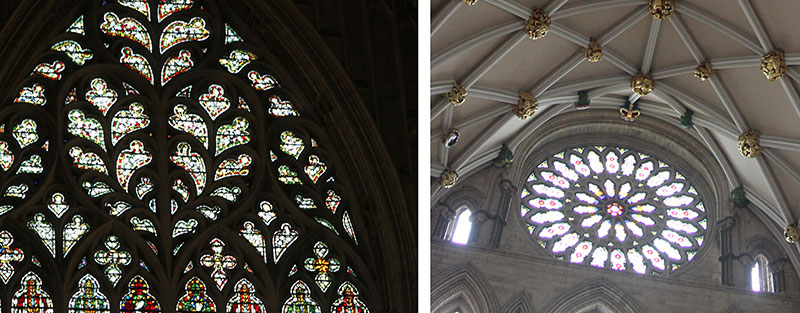
A heart-shaped window on the west side, built in 1338 and representing the heart of Jesus, is referred to locally as the "Heart of Yorkshire."
A Cathedral is a church with a bishop, whose seat is called the cathedra, which is where the word Cathedral comes from, seat of the bishop. And the Minster is the seat of the Archbishop of York, the second-most-important position in the Church of England.
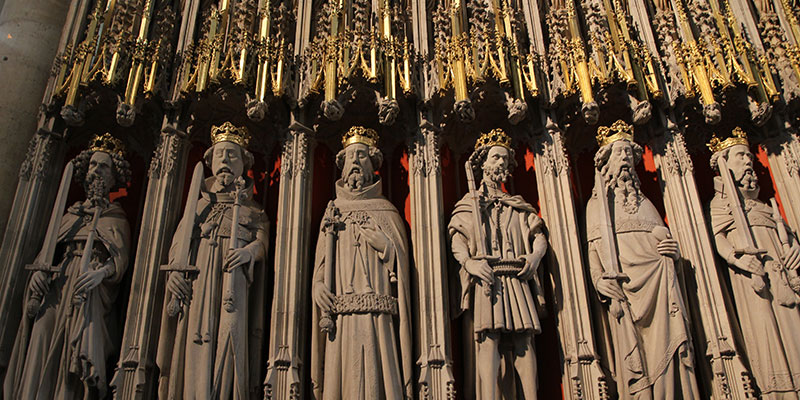
The choir entrance is set in the screen, with stone carvings of the kings of England from William I to Henry VI.
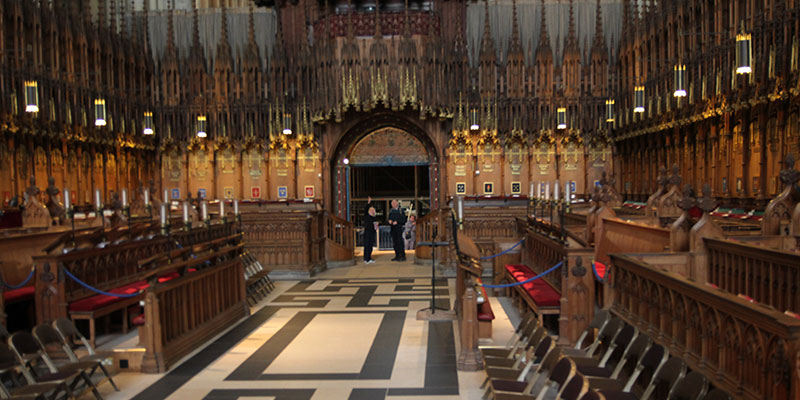
The choir is rich with carved wooden seats, the western end occupied by canopied stalls, terminated on the north side by the pulpit, and on the south side by the cathedra of the Archbishop, or the Archbishop's seat.

Be sure to walk downstairs to an impressive historic display. During structural restorations carried out in recent decades, remains of the original Roman fort from 2,000 years ago along with traces of the Norman cathedral, were found under the south transept.
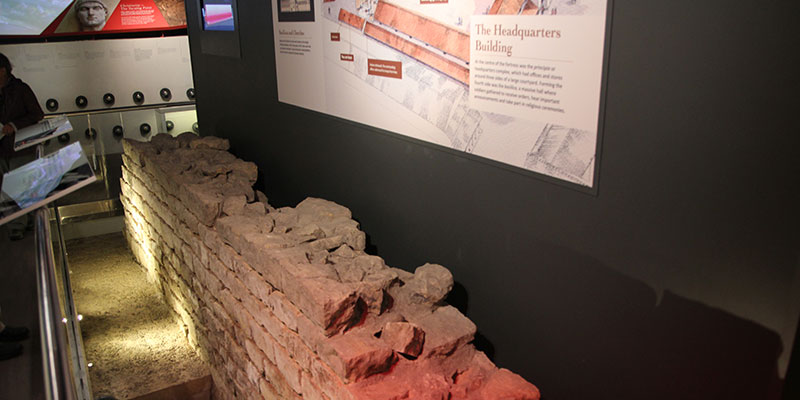
This underground area was re-opened to the public in 2013 as part of the new exhibition exploring the history of the building of York Minster. You can sit comfortably, watch a movie, and play with some of the high-tech, interactive digital displays.
The massive church was created because religion was the dominant factor in the social and political life of medieval England. Bishops vied with each other to make their cathedrals more and more beautiful.

Kings used their influence to further building operations. Nobles gave materials and money. Funds were augmented by granting of indulgences, penances and by offerings and bequests. This passion resulted in the creation of one of the world's great buildings.
The Minster impresses with its massive size. Spaciousness is the leading interior feature, with the widest nave of all British gothic churches, giving an effect to the whole composition of great stability and permanence.
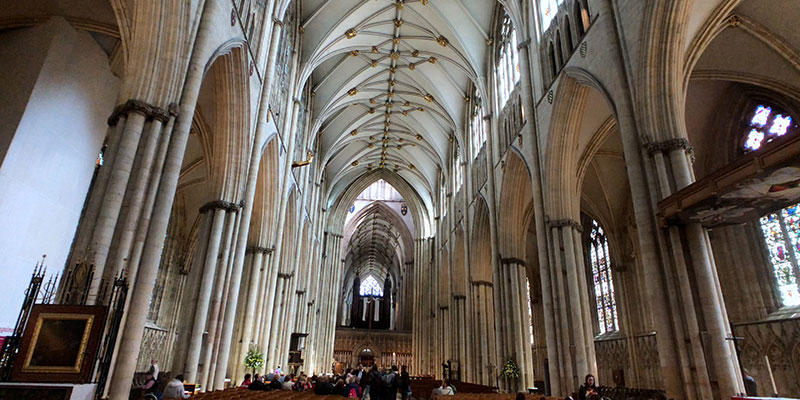
Built during three centuries in various styles that clearly chart the development of Gothic architecture from Early English through to the Perpendicular Period. And yet it gives an impression of a great unity of overall design.
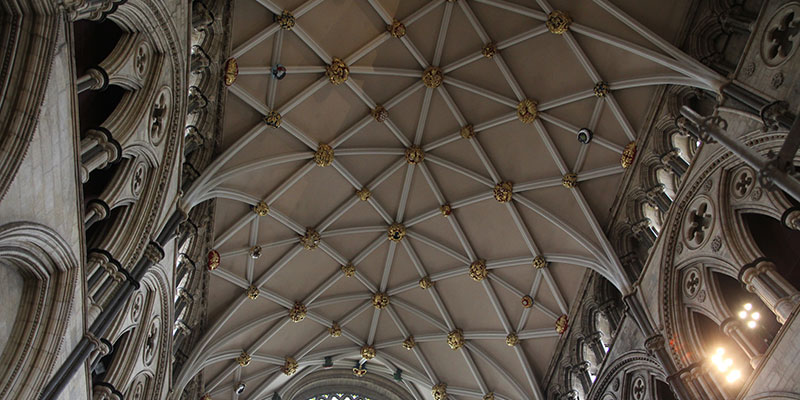
While the church is built of heavy gray stone, the ceiling is still made of wood, painted to look like stone. It's called "minster" because that is a label attributed to churches that were established in the Anglo-Saxon period as missionary teaching churches, and serves now as an honorific title.
The English Reformation under Henry VIII led to the looting of all English churches including much of the Cathedral's treasures, and loss of much of the church property. Under Elizabeth I there was a further effort to remove all traces of Catholicism from the Cathedral; there was a lot of destruction of tombs, windows and altars.

During the Civil War of 1644 York was besieged and fell to the forces of Cromwell, but protest prevented any further damage to the church. Following the easing of religious tensions in the early 18th century some work was done to restore the Cathedral. After 1730 the whole floor of the Minster was re-laid in pattern marble, and from 1802 there was a major restoration. Four different fires devastated the building over the centuries requiring extensive repairs.
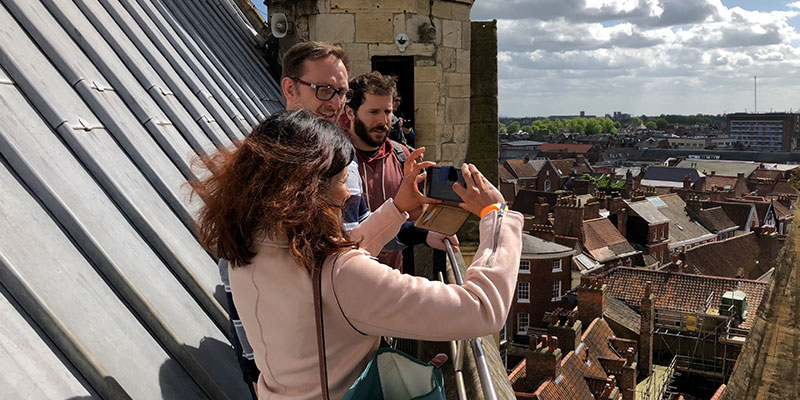
You can climb up the spiral stone staircase to the roof of the Cathedral. Just take your time. It's not that hard to climb up, and you will enjoy incredible views across the old city.
Right next to the church you'll find Deans Park, a tranquil patch of greenery ideal for taking a break – maybe sit on a bench or spread out on the grass and relax for a while.
